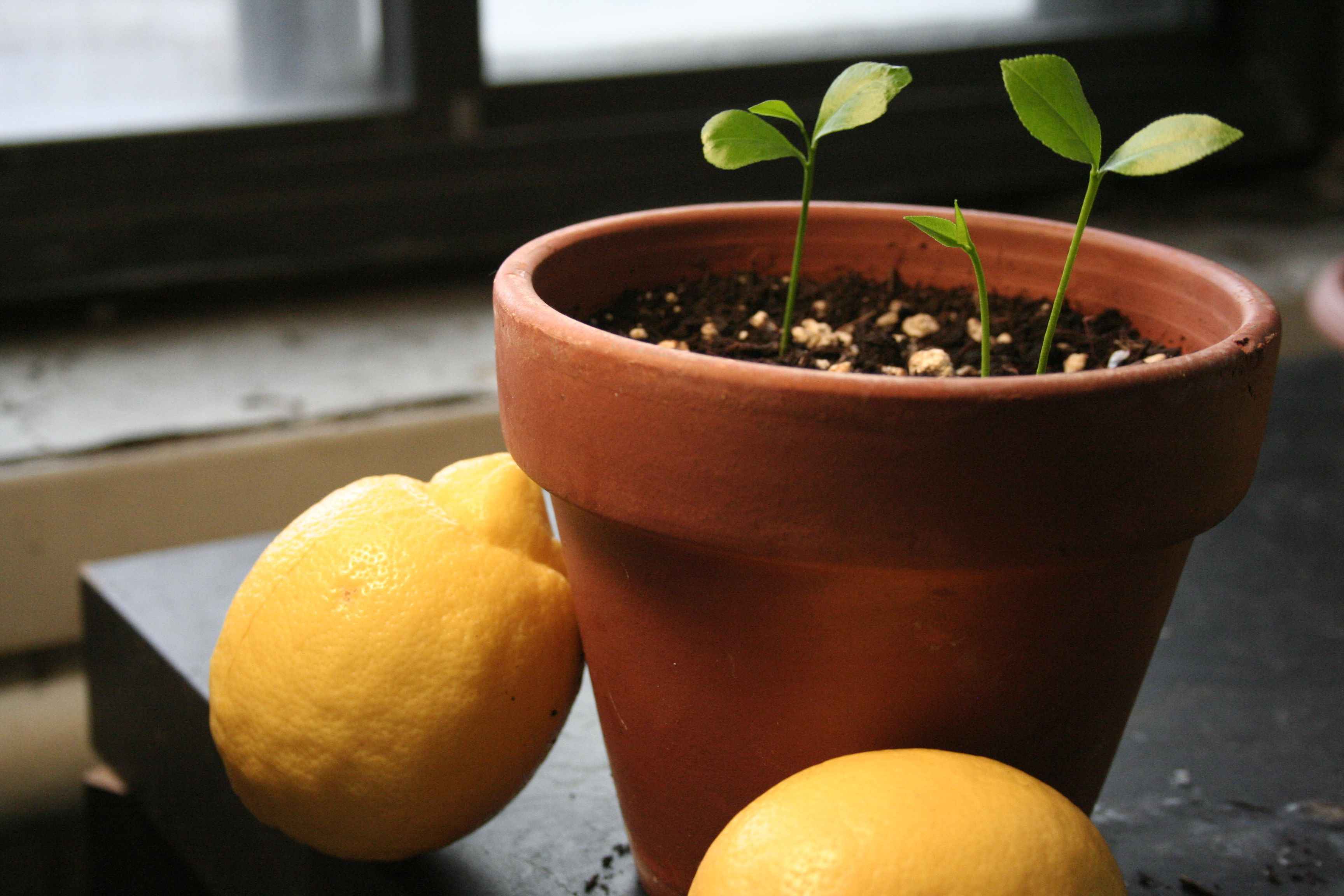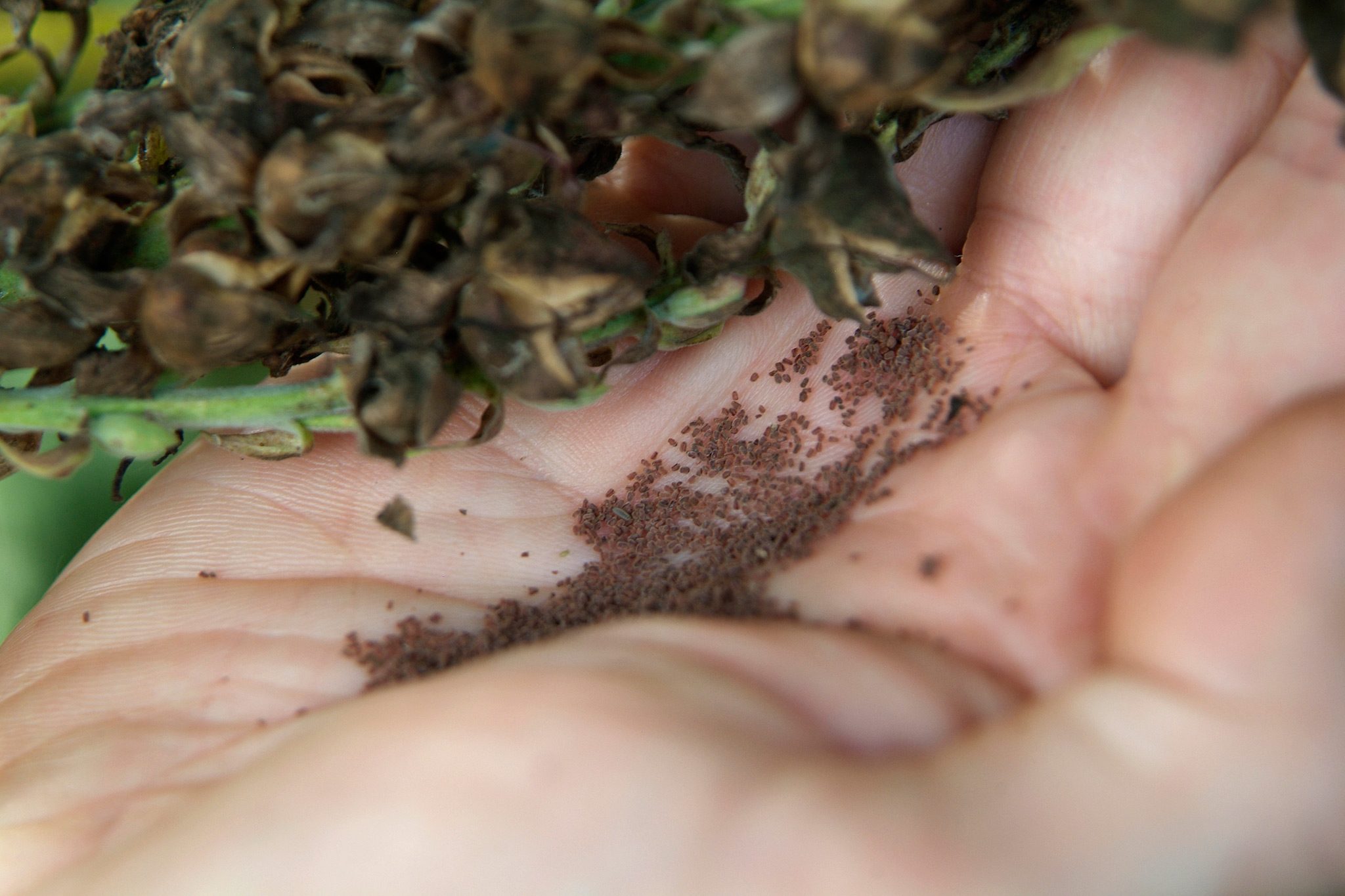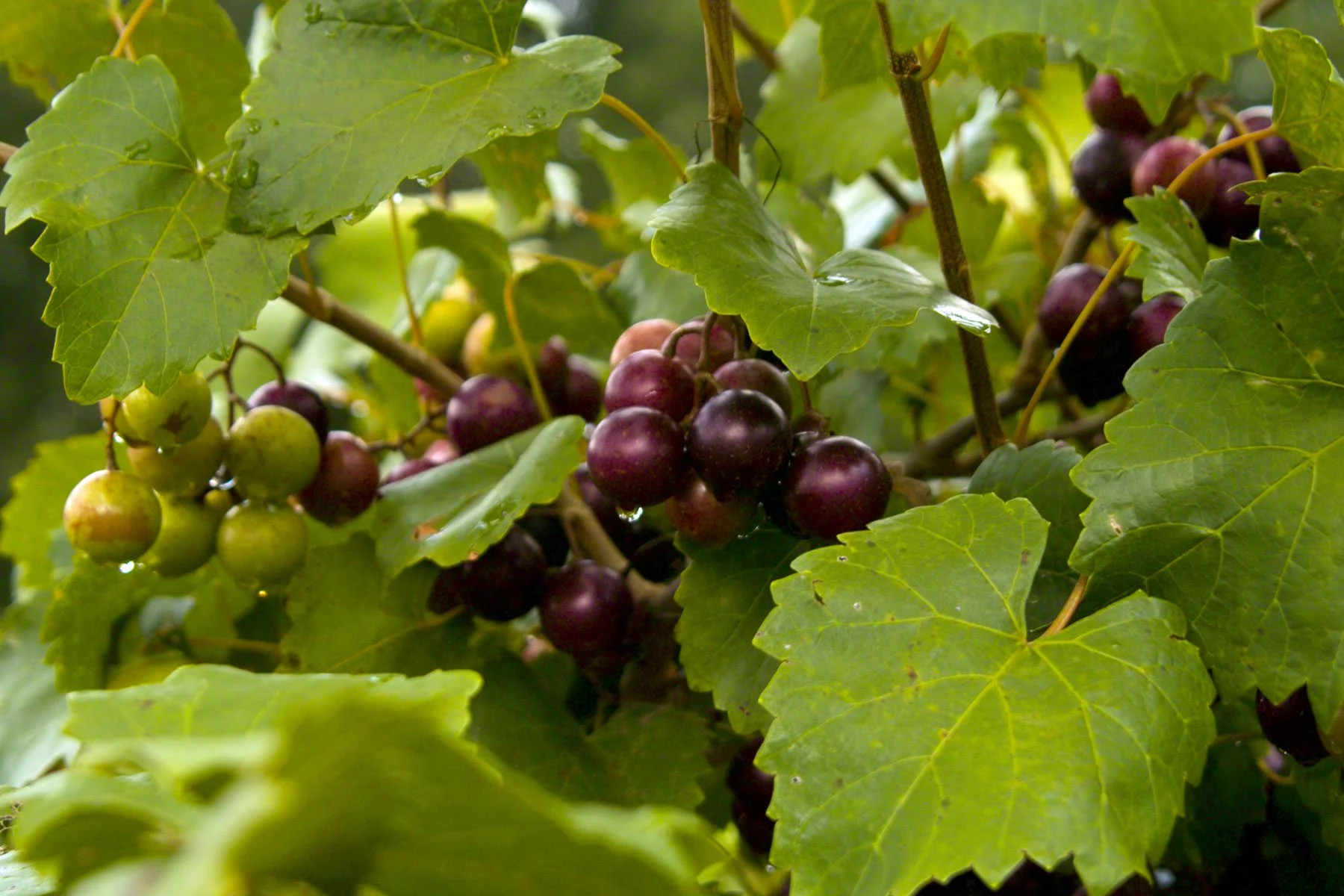Home>Types of Gardening>Edible Gardening>How To Use Lemon Seeds For Planting


Edible Gardening
How To Use Lemon Seeds For Planting
Modified: January 22, 2024
Learn how to utilize lemon seeds for edible gardening. Discover the process of planting and growing lemon trees from seed in your own backyard.
(Many of the links in this article redirect to a specific reviewed product. Your purchase of these products through affiliate links helps to generate commission for Chicagolandgardening.com, at no extra cost. Learn more)
Table of Contents
Introduction
Welcome to the wonderful world of edible gardening! Growing your own food is not only rewarding but also a sustainable way to enjoy fresh produce right from your own backyard. And what better way to start your edible gardening journey than with lemon seeds? Lemons are not only versatile in the kitchen but also a popular choice for home gardeners due to their ease of growing and their ability to thrive in various climates.
Using lemon seeds for planting is a cost-effective and sustainable approach to growing your lemon trees. It allows you to propagate new plants from the seeds of store-bought lemons, giving you an abundant supply of fresh lemons for years to come. Plus, it’s a fascinating process that allows you to witness the growth and development of these vibrant citrus trees from the very beginning.
In this article, we will explore the benefits of using lemon seeds for planting, the steps to select and prepare the seeds, how to germinate and plant the seeds, and the care required to nurture healthy lemon seedlings. We will also discuss common issues that you might encounter during the process and provide troubleshooting tips. Lastly, we’ll delve into the joy of harvesting your homegrown lemons and how to use them in various culinary creations.
So, get ready to embark on a green adventure and let’s dive into the world of lemon seeds for planting!
Benefits of Lemon Seeds for Planting
Using lemon seeds for planting offers a multitude of benefits for both the environment and the avid gardener. Let’s explore some of the advantages of incorporating lemon seeds into your edible gardening endeavors:
- Cost-effective: Growing lemon trees from seeds is an economical way to expand your garden. Instead of purchasing young lemon trees, you can repurpose seeds from the lemons you consume, saving you money in the long run.
- Sustainability: By planting lemon seeds, you are reducing waste and promoting sustainability. Rather than discarding the seeds, you give them a new purpose and contribute to a greener environment.
- Engaging and educational: Planting lemon seeds allows you to engage in a hands-on gardening experience. It’s a fantastic learning opportunity for both adults and children, teaching them about plant life cycles, germination, and nurturing seedlings.
- Flexibility in varieties: When starting from seeds, you have the freedom to choose the lemon variety that suits your preferences. Whether you prefer the classic Eureka lemon or the tangy Meyer lemon, you have the flexibility to explore different varieties and flavors.
- Adaptability: Lemon seeds have the potential to grow into strong and adaptable trees. With proper care and attention, lemon trees can thrive in various climates and provide you with an abundant supply of delicious lemons.
- Health benefits: Lemons are known for their high vitamin C content and numerous health benefits. By growing your own lemons, you have easy access to nutritious fruit to enhance your diet and support a healthy lifestyle.
- Aesthetic appeal: Lemon trees are not only productive but also visually appealing additions to any garden. With their glossy evergreen leaves and fragrant blossoms, lemon trees add beauty and a touch of Mediterranean charm to your outdoor space.
With these compelling benefits in mind, it’s clear why using lemon seeds for planting is an enticing choice for edible gardeners. Now that we understand the advantages, let’s move on to the next steps: selecting and preparing the lemon seeds for optimal growth.
Selecting and Preparing Lemon Seeds
When it comes to selecting lemon seeds for planting, it’s important to choose fresh and viable seeds to ensure successful germination. Let’s dive into the steps involved in selecting and preparing lemon seeds:
- Freshness: Select lemons that are ripe and fresh. Look for lemons with vibrant yellow skin and a firm texture. Avoid using seeds from overripe or spoiled lemons, as they may not yield viable seeds.
- Seed extraction: Cut the lemon in half and gently squeeze out the seeds. Carefully separate the seeds from the pulp, removing any excess fruit flesh. Rinse the seeds with water to clean off any remaining pulp.
- Seed drying: After rinsing, place the seeds on a paper towel or a mesh screen to dry. Allow them to air dry completely for about 24-48 hours. Ensure they are completely dry before proceeding to the next step.
- Seed storage: Once the lemon seeds are fully dried, store them in a cool, dry place. You can place them in a small envelope or a labeled container. It’s important to keep the seeds in airtight packaging to protect them from moisture and maintain their viability.
It’s worth noting that lemon seeds may not always produce true-to-type plants. Lemon trees grown from seeds are often hybrids and may have different characteristics compared to the parent tree. However, this adds an element of surprise and uniqueness to your garden, as you might discover a new variety that suits your taste.
Now that you have selected and prepared your lemon seeds, it’s time to move on to the next step: germinating the seeds. Let’s explore the process of coaxing these tiny seeds to sprout and grow into healthy lemon seedlings.
Germinating Lemon Seeds
Germinating lemon seeds is an exciting and crucial step in the journey of growing your lemon trees. This process involves providing the right conditions for the seed to sprout and develop into a seedling. Let’s explore the steps to successfully germinate lemon seeds:
- Seed scarification: Lemon seeds have a hard outer coating that can inhibit germination. To increase germination rates, you can gently scarify the seed coat by carefully nicking it with a sharp knife or rubbing it lightly with sandpaper. This helps water penetrate the seed and initiate the germination process.
- Seed soaking: Soaking the scarified seeds in water overnight can further improve germination rates. Place the seeds in a container filled with room temperature water and let them soak for about 12-24 hours.
- Moisture and warmth: Create a suitable environment for seed germination by providing consistent moisture and warmth. Plant the soaked seeds in a seed tray or small pots filled with a well-draining seed starting mix. Keep the soil moist but not waterlogged and place the tray or pots in a warm area with temperatures around 70-80°F (21-27°C).
- Patience: Germination can take anywhere from 2 to 6 weeks, so be patient. Check the soil moisture regularly and mist the seeds gently if needed to maintain a moist environment. Avoid overwatering, as it can lead to rotting of the seeds.
- Seedling emergence: Once the seeds have successfully germinated, you will start to see tiny seedlings emerge from the soil. At this stage, provide ample sunlight or a grow light source to promote healthy growth.
It’s important to note that not all lemon seeds will germinate, and some may take longer than others. Be prepared for variations in germination rates, but with the right care and patience, you will witness the exciting moment of seeing your lemon seedlings emerge.
Now that your lemon seeds have sprouted and are growing as seedlings, it’s time to learn how to plant them and provide the necessary care for their development. Let’s move on to the next section: planting lemon seeds.
Planting Lemon Seeds
Now that you have successfully germinated your lemon seeds and they have grown into healthy seedlings, it’s time to plant them in their permanent home. Follow these steps to properly plant your lemon seedlings:
- Choose a suitable container: Select a pot or container that is at least 12-18 inches in diameter with drainage holes at the bottom. Ensure the pot is filled with a well-draining potting mix.
- Transplant seedlings: Gently remove the young lemon seedlings from the seed tray or small pots, being careful not to disturb their delicate roots. Plant each seedling in the center of the pot, ensuring the top of the root ball is level with the soil surface.
- Backfill with soil: Fill the remaining space around the seedlings with potting mix, gently firming it around the roots to provide stability.
- Water thoroughly: Give the newly planted seedlings a thorough watering to settle the soil and help establish the roots. Ensure the water reaches the root zone without saturating the soil.
- Provide sunlight: Place the pot in a location that receives at least 6-8 hours of direct sunlight each day. If growing indoors, place the pot near a sunny window or use artificial grow lights to provide adequate light.
- Monitor moisture: Check the moisture level of the soil regularly and water the seedlings when the top inch of soil feels dry. Avoid overwatering, as it can lead to root rot.
- Feed with nutrients: Once the seedlings have established themselves, begin fertilizing them with a balanced organic citrus fertilizer according to the package instructions. Feed the plants every 6-8 weeks during the growing season.
Keep in mind that lemon trees prefer a slightly acidic soil with a pH range of 5.5-6.5. Regularly monitor the pH level of the soil and make adjustments if needed to ensure optimal growing conditions for your lemon tree.
With proper planting and care, your lemon seedlings will continue to grow and develop into beautiful and productive lemon trees. In the next section, we’ll discuss the essential care needed to nurture your lemon seedlings for optimum growth.
Caring for Lemon Seedlings
Proper care is essential for the healthy growth and development of your lemon seedlings. By providing the necessary attention and meeting their specific needs, you can ensure that your lemon trees thrive. Here are some key aspects to consider when caring for your lemon seedlings:
- Watering: Lemon trees prefer consistently moist soil but not waterlogged conditions. Water the seedlings deeply when the top inch of soil feels dry and ensure that the water reaches the root zone. Avoid overwatering, as it can lead to root rot.
- Sunlight: Lemon trees require ample sunlight to thrive. Place the pot in a location that receives at least 6-8 hours of direct sunlight each day. If growing indoors, use artificial grow lights to supplement the natural light.
- Temperature: Lemon trees prefer warm temperatures between 70-85°F (21-29°C). Protect them from extreme cold or heat by moving them indoors or providing shade during extreme weather conditions.
- Fertilizing: Feed your lemon seedlings with a balanced organic citrus fertilizer according to the package instructions. Apply the fertilizer every 6-8 weeks during the growing season to provide the necessary nutrients for healthy growth.
- Pruning: Pruning is not necessary for young lemon seedlings. However, once they reach maturity, you can prune them to maintain their shape and encourage a well-branched structure. Remove any dead, damaged, or crossing branches to promote better airflow and light penetration.
- Pest and disease control: Keep an eye out for common pests such as aphids, scale insects, and mealybugs. Regularly inspect the leaves and branches for any signs of infestation. If necessary, treat the affected areas with organic pest control methods or insecticidal soap. Additionally, be vigilant for signs of diseases like citrus canker or root rot and take appropriate measures to prevent their spread.
It’s important to note that lemon trees may take several years to bear fruit. However, the journey of nurturing your lemon seedlings into mature trees is incredibly rewarding, and the wait for the first harvest is well worth it.
In the next section, we’ll discuss common issues that you might encounter when growing lemon trees and provide troubleshooting tips to overcome them.
Common Issues and Troubleshooting
While growing lemon seedlings can be a rewarding experience, it’s not uncommon to encounter certain issues along the way. Understanding and addressing these issues promptly can help ensure the health and vitality of your lemon trees. Here are some common problems that you might encounter and troubleshooting tips to overcome them:
- Poor or no germination: If your lemon seeds fail to germinate, it may be due to factors such as poor seed quality, inadequate scarification, or unsuitable temperature conditions. Ensure that you are using fresh and viable seeds, properly scarify the seed coat, and provide consistent warmth and moisture during the germination process.
- Yellowing leaves: Yellowing leaves can be a sign of nutrient deficiencies, overwatering, or poor drainage. Ensure that your lemon trees are receiving adequate nutrients through regular fertilization and avoid overwatering. Check the soil drainage to ensure excess water can escape freely.
- Pest infestation: Common pests that may affect lemon trees include aphids, scale insects, and mealybugs. Regularly inspect the leaves and stems for signs of infestation, such as sticky residue, curled leaves, or discolored spots. Treat affected areas with organic pest control methods or insecticidal soap to eliminate the pests.
- Disease susceptibility: Lemon trees can be vulnerable to diseases such as citrus canker or root rot. To prevent these diseases, ensure proper watering practices, avoid over-fertilization, and maintain good airflow around the plants by pruning any overcrowded branches. If you suspect a disease, consult with a local gardening expert or extension service for proper diagnosis and treatment options.
- Lack of fruiting: It can take several years for lemon trees to start bearing fruit. However, if your lemon tree is not fruiting despite being mature, it could be due to insufficient sunlight, improper pruning, or a lack of nutrients. Ensure that your lemon tree receives adequate sunlight, prune it to maintain a healthy shape, and provide regular fertilization to promote fruit production.
Remember that every gardening journey comes with its fair share of challenges. Take the time to observe and understand the needs of your lemon trees, and be proactive in addressing any issues that arise. With care and perseverance, you’ll be rewarded with healthy lemon trees and a bountiful harvest.
In the next section, we’ll explore the joy of harvesting your homegrown lemons and share some ideas on how to use them in various culinary creations.
Harvesting and Using Lemon Fruit
One of the most exciting moments for any gardener is the time to harvest the fruits of their labor. When it comes to harvesting lemons, there are a few key indicators to look for to ensure you pick them at their peak of ripeness:
- Color: Mature lemons typically have a bright yellow color. However, depending on the variety, some lemons may have a greenish tint even when fully ripe. Trust your judgment and choose lemons that have a vibrant color.
- Size: Lemon fruits should feel heavy for their size when you gently hold them. Avoid picking lemons that are still small and underdeveloped.
- Texture: The skin of ripe lemons should be smooth and slightly firm. Avoid lemons with wrinkled or soft skin, as it may indicate overripeness or spoilage.
To harvest lemons, gently twist or cut the fruits from the tree, leaving a small piece of stem attached to the lemon. This helps prolong the fruit’s shelf life. Collect the freshly harvested lemons in a basket or container, being careful not to bruise or damage them.
Now that you have a bounty of homegrown lemons, it’s time to explore the many delightful ways to use them in the kitchen. Here are some ideas:
- Culinary uses: Lemons are a versatile ingredient that adds a vibrant citrus flavor to a wide range of dishes. Use freshly squeezed lemon juice in marinades, salad dressings, sauces, and desserts. Zest the lemon peel to add a burst of flavor to baked goods, soups, and pasta dishes.
- Beverages: Freshly squeezed lemon juice is a refreshing addition to both hot and cold beverages. Squeeze a wedge of lemon into a glass of water for a revitalizing and hydrating drink. Create homemade lemonade, lemon-infused tea, or cocktails for a zesty twist.
- Preserving: Lemons can be preserved in various ways to enjoy their flavor throughout the year. Make lemon preserves, lemon curd, or lemon marmalade to spread on toast or use as a filling or topping for desserts.
- Health and wellness: Lemons are renowned for their vitamin C content and other beneficial compounds. Start your day by squeezing fresh lemon juice into a glass of warm water for a revitalizing and immune-boosting morning tonic. You can also use lemon slices or juice to enhance the flavor of herbal teas or incorporate them into your favorite smoothie recipes.
With your imagination and a supply of homegrown lemons, the culinary possibilities are endless. Experiment with different recipes and enjoy the vibrant, tangy flavors that homegrown lemons bring to your table.
As we conclude this article, we hope you feel inspired to start your own lemon seedling project and experience the joy of growing and harvesting your own lemons. Happy gardening and happy lemony adventures!
Conclusion
Embarking on the journey of growing lemon trees from seeds is a gratifying experience that offers a multitude of benefits. From using cost-effective and sustainable methods to witnessing the magical process of germination and nurturing seedlings, the world of lemon seeds for planting is filled with excitement and rewards.
Throughout this article, we have explored the benefits of using lemon seeds, the steps involved in selecting and preparing the seeds, the process of germinating and planting them, and the essential care needed to nurture healthy lemon seedlings. We’ve also discussed common issues you may encounter and provided troubleshooting tips to overcome them.
Once your lemon seedlings are established, the journey continues as you care for them and eagerly anticipate the moment when they bear fruit. Harvesting your homegrown lemons is a culmination of your hard work, and the possibilities for their culinary uses are endless.
Whether you choose to use lemons in refreshing beverages, in various culinary creations, or for their health benefits, the flavor and satisfaction of homegrown lemons far surpass store-bought alternatives.
So, roll up your sleeves, gather your lemon seeds, and begin your adventure into the world of edible gardening. Cultivate patience, apply the knowledge and tips learned here, and enjoy the whole journey of growing and harvesting your own lemons. The delightful taste of freshly picked lemons will be a testament to your effort and dedication.
Happy gardening, and may your lemon trees flourish and bring you abundant joy and citrusy goodness for years to come!










